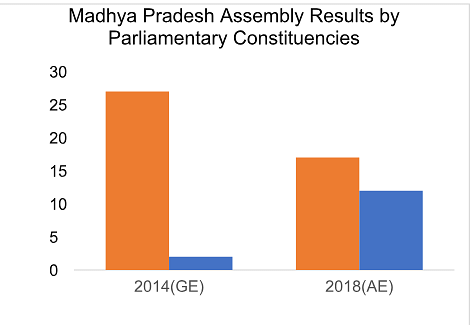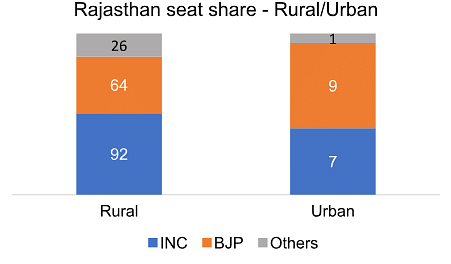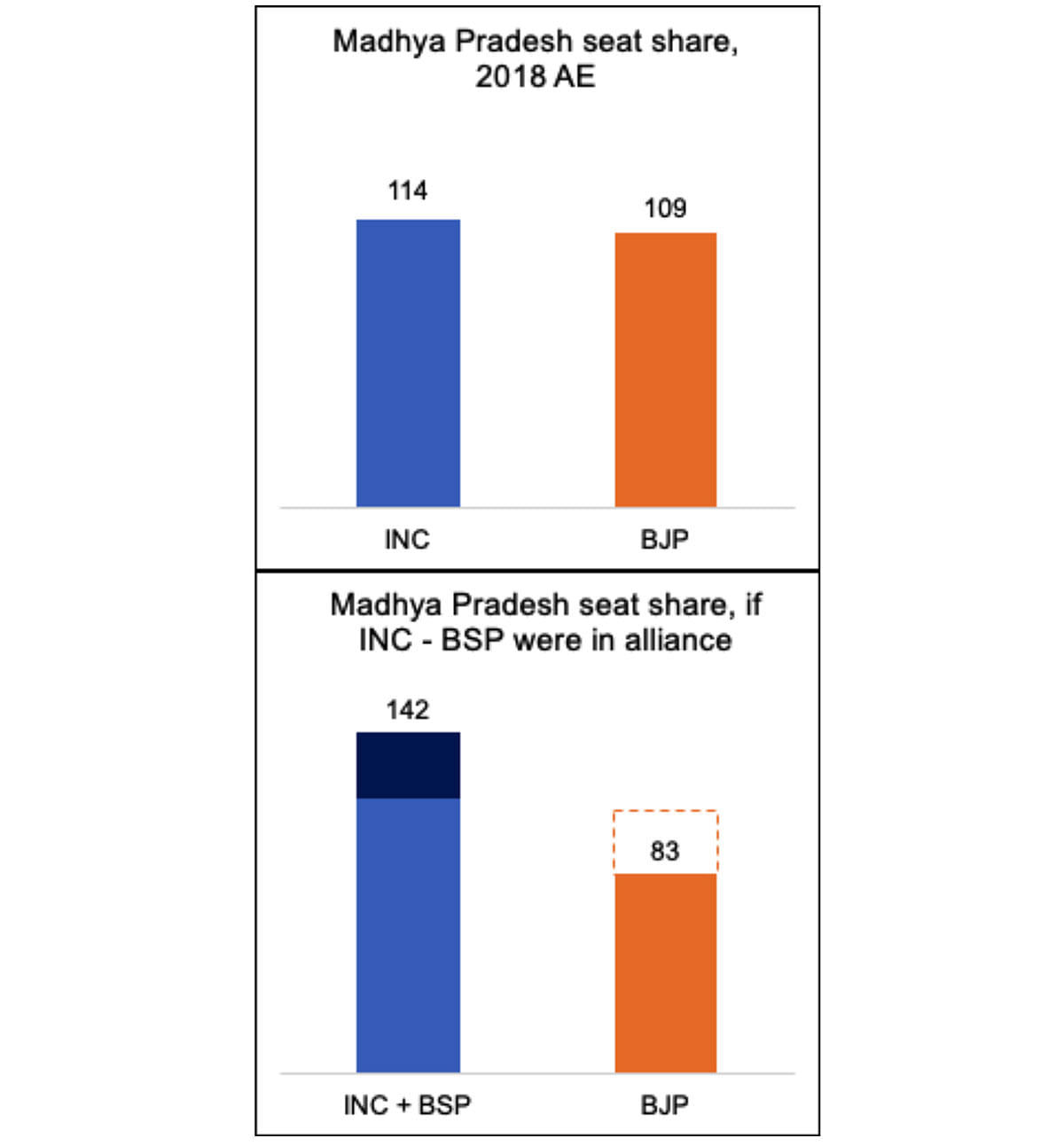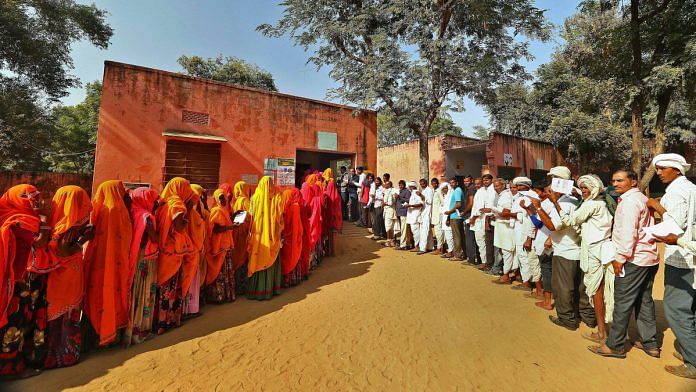Just like 2004, the Congress would be hoping to make a comeback through the rural seats.
The BJP hopes to gain most of the lost ground in the state polls by the 2019 general elections.
If we look at the state election results from Tuesday and club the assembly constituencies (AC) to form parliamentary constituencies (PC), then the BJP would have lost 10 PCs in Madhya Pradesh and 12 in Rajasthan.


It is safe to say that voting in the 2019 general elections (GE) would be very different from the assembly elections (AE). Prime Minister Narendra Modi is still the most popular leader in the country and the anti-incumbency against the central government is lower than the state governments.
However, in order to avoid a repeat of 2004 elections, the central government would need to address the biggest challenge that it faces – the agrarian crisis. Just like 2004, the Congress would be hoping to make a comeback through the rural seats.
Rural/urban divide


If we look at the rural/urban seat divide in the assembly elections in both Rajasthan and Madhya Pradesh, it is quite clear that the rural constituencies are favouring the Congress over the BJP. This pattern has been evident right from the Gujarat assembly election of 2017, where the BJP managed a victory only because the state has a much higher number of urban and sub-urban seats than most of the Hindi belt.
Also read: NOTA is outscoring some political heavyweights across India
Winning margin


The good news for the BJP is that in both Madhya Pradesh and Rajasthan, its vote share was very close to the Congress — in Madhya Pradesh it was actually slightly higher. The fact that these two states were very closely contested is evident from the large number of seats where the margin was less than 5,000.
Pre-poll alliances

One key takeaway for the Congress from these state elections would be the importance of pre-poll alliances. If it had entered a pre-poll alliance with the BSP in Madhya Pradesh and Chhattisgarh, then the alliance would have definitely secured a comfortable majority in Madhya Pradesh (142 out of 230 seats) and managed a much bigger margin in Rajasthan (116 out of 199 seats that went to poll).


These state elections were considered to be the semi-final to 2019, and the outcome has ensured that 2019 (unlike 2014) will be a much more level-playing field for opposition parties. However, if the opposition sees these results as a simple referendum on PM Narendra Modi and his popularity, then they couldn’t be more wrong. The BJP is still in a position of relative advantage in 2019.
Also read: State election defeat shows Narendra Modi wins only when he is a challenger
With inputs from I-PAC’s data team. All data has been sourced from the ECI website
The authors are members of I-PAC’s data team



